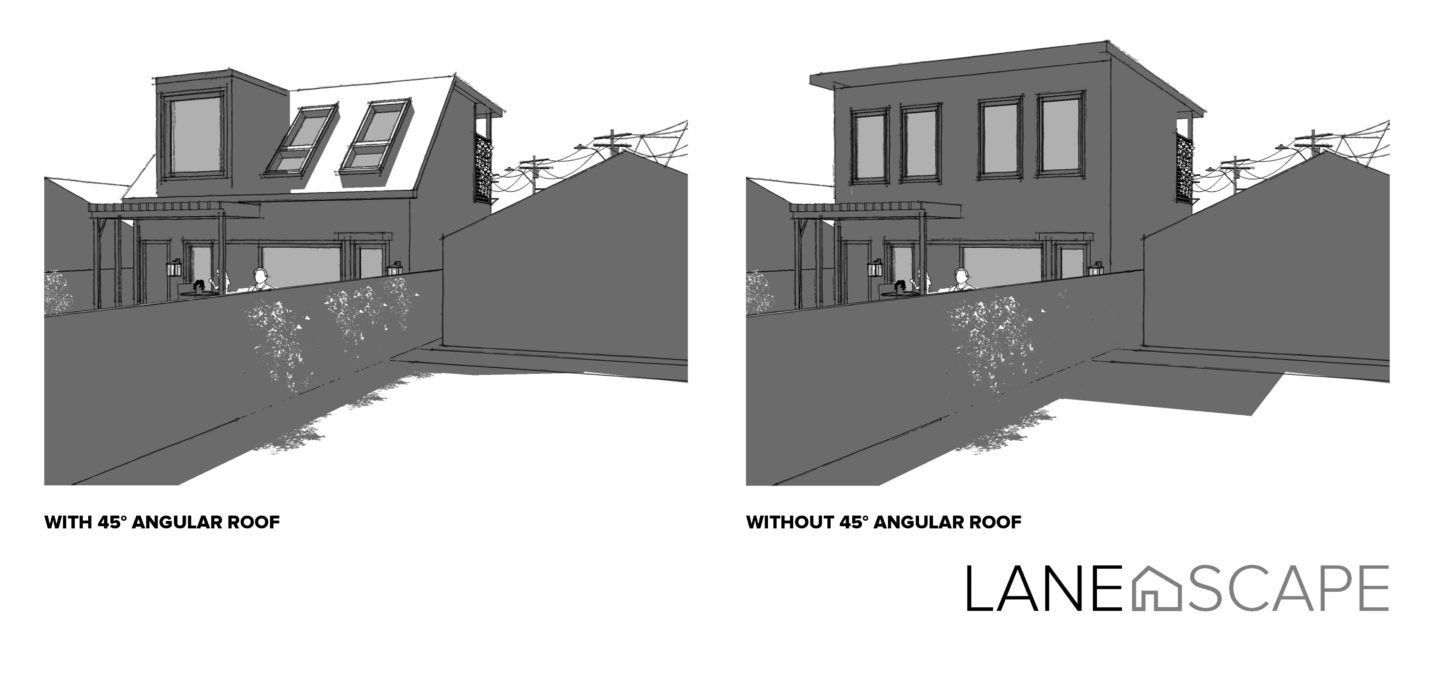Toronto City Council is voting to adopt the Changing Lanes policy. It was already approved by the Toronto and East York Community Council, and that decision will hopefully be adopted some time in the next 36 hours.
While we wait for the Council decision, I (Craig, the resident architect) want to dive into one of the most important and controversial aspects of the policy – the rear yard angular plane.
If you would like information on how the forthcoming bylaws apply to your property, email us for a quick assessment.
I was pleased that many of my architectural and building colleagues were proudly outspoken at the Changing Lanes public meetings. Our industry has thrown their weight behind the laneway housing movement as a gentle and responsible way for homeowners to improve housing flexibility, and I could not be happier to see such positive enthusiasm. But I was surprised to hear many architects complain about the rear yard angular plane. I heard three concerns – it reduces the amount of second floor space, it adds cost, and it restricts design expression.

I personally advocated to keep the angular plan in the policy because I do not agree with those concerns. It is very easy to design around them in almost every case. But more importantly, the angular plane is a gesture that is so critical to the positive growth of our city, its absence would corrupt the entire purpose of the policy.
The angular plane is a symbol of respect. It is a design element that says, ”We want to be respectful of our neighbours, protect their quality of space, and invest in good urbanism!” Here is why:
Myth 1: The Rear Yard Angular Plane Reduces Second Floor Space
First of all, the current allowance for second floor space above a garage is 0 sq.ft. So let’s maintain perspective on how far this policy advances our entitlements.
Second, there is sufficient space to have a bed, desk, or seating space under the angular plane where standing is not necessitated.
Third, there is a complimentary allowance for dormers to penetrate up to 30% of the plane. That means 30% of the facade can be full-height space. Plenty of room to stand comfortably by the window and take in the views.
Fourth, if you don’t like the above solutions, simply build your laneway suite beyond the angular plane setback so you can have a vertical wall.
Myth 2: The Rear Yard Angular Plane Adds Cost
If cost is your primary concern, refer to point 4 above. A vertical wall can be accommodated in most cases.
But let’s say you choose to maximize your building entitlements. How much of a cost increase is a pitched roof? About 0.1% of the overall cost. And by doing this, you have added liveable space, which means your rental income has produced a net gain!
Let’s not lose sight of the social cost of building in urban areas. The angular plane means your neighbours will experience almost no sunlight loss compared to an as-of-right garage. It also protects their privacy, and the privacy of your own main house. The angular plane means you have considered the qualities of good urban design that make our rear yards and laneways great places to live.
The “cost” is completely avoidable. But if you choose to embrace it, value is added to your home, and to our society and urban space.
Myth 3: The Rear Yard Angular Plane Restricts Architectural Expression
The Changing Lanes policy defines the maximum space a designer can operate within. Those maximums have to be defined to protect the quality of space around the new structure, but inside of that, the only restriction is the designer’s imagination.
At Lanescape, we have tested designs for pitched roofs, minimalist boxes, curved walls, curtain walls, colourful materials, camouflage paint, floating cubes, cantilevers, green roofs, and green walls. And we have only begun to scratch the surface of what is possible!
The flexibility engrained in this policy is exceptional. Especially when compared to the oppressive, conflicting, and unrealistic zoning requirements of main houses. Laneway suites are a new paradigm of zoning flexibility and simplicity that will unlock creative expression in new ways.
If your architect is struggling to work within this policy, give me a call.
